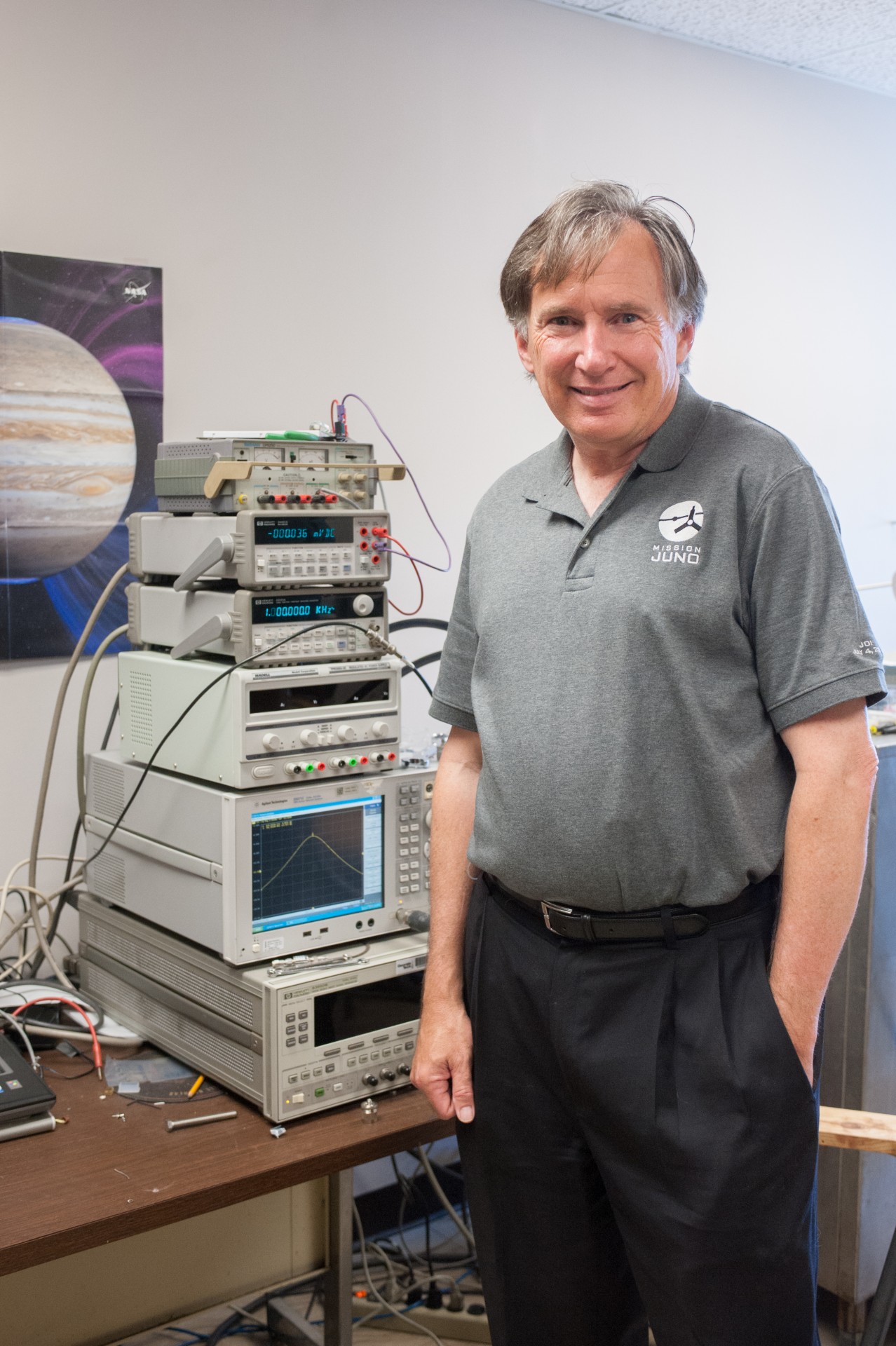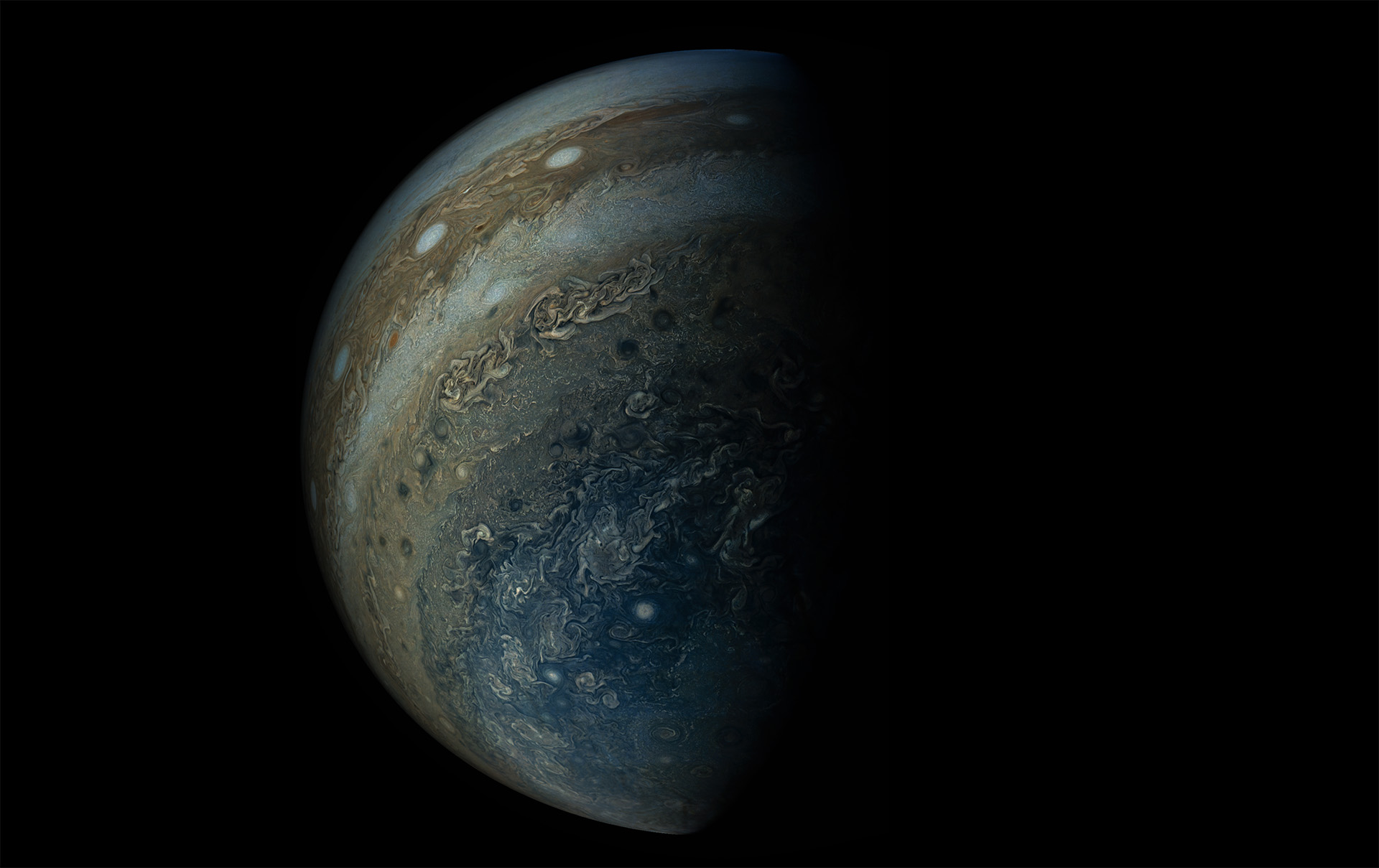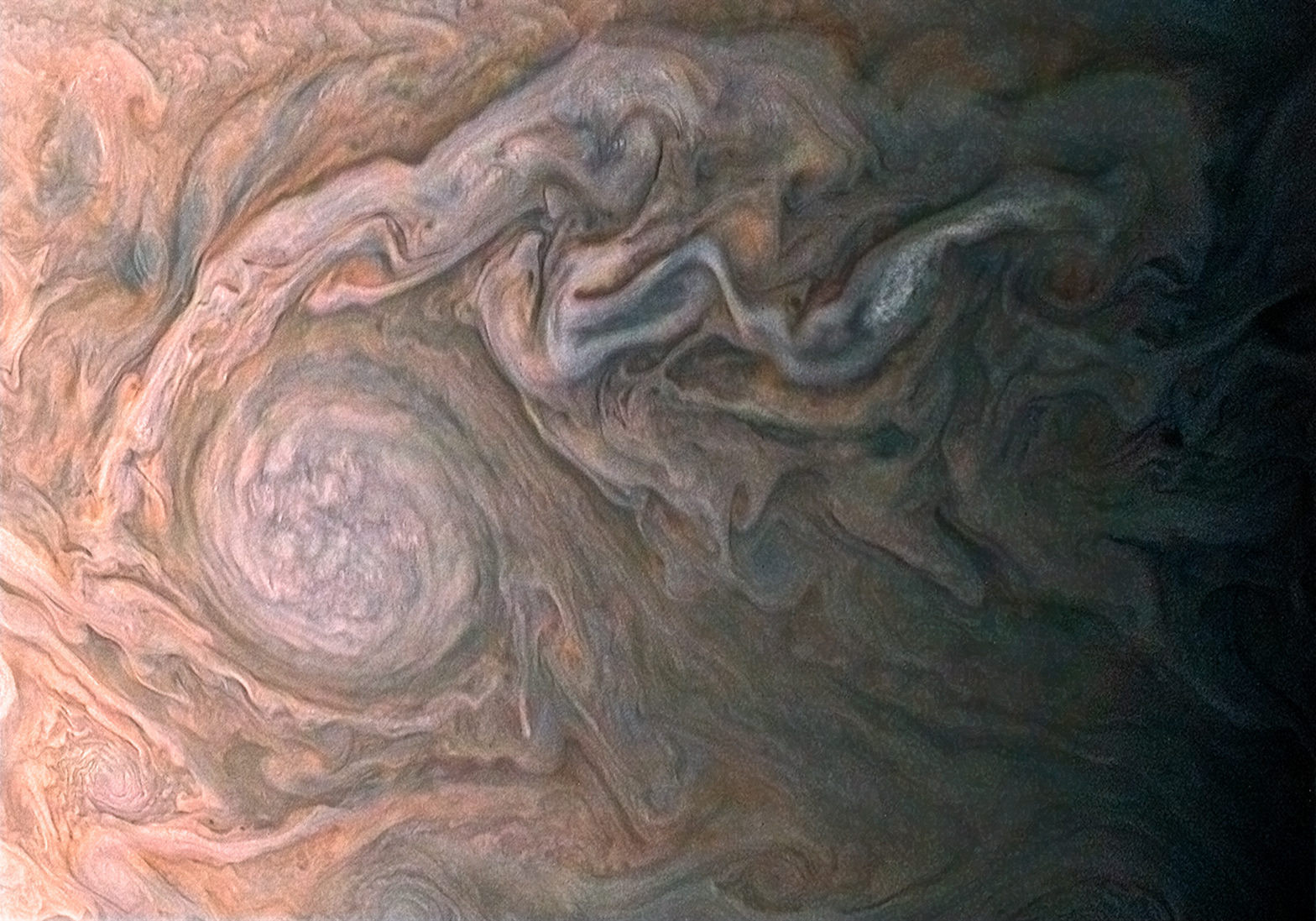
NASA's Juno Mission Reveals Jupiter’s First Surprises
By Jason Maderer | May 25, 2017
The Juno Science Team, which includes Georgia Tech Professor Paul Steffes, has published its first observations of Jupiter. In a paper that now appears in the journal Science, the researchers describe a chaotic scene of ammonia, cyclones, and bands of storms that extend far deeper beneath the planet’s clouds than previously thought.
Juno has been circling Jupiter since entering its orbit on July 4, 2016, and has completed six passes of the planet so far. The paper outlines findings from Juno’s first pole-to-pole orbit on August 27, when the basketball court-sized spacecraft skimmed within nearly 2,000 miles of Jupiter’s equatorial cloud tops.
While Saturn’s poles are relatively quiet and uneventful, Jupiter’s are unexpectedly
tumultuous. Cyclonic storms were seen on both ends of the planet, densely clustered and rubbing
together. They’re powered by the heat coming from within Jupiter’s interior.
Juno’s measurements also revealed that the planet’s magnetic field is two times stronger than
scientists anticipated. At 7.776 G, it’s more than a magnitude greater than those at Earth’s
South Pole.
Steffes, a professor in the School of Electrical and Computer Engineering, is one of the original members of the science team. He’s been receiving measurements from Juno’s microwave radiometer (MWR) since the fall. The instrument measures radio waves from the planet’s deep atmosphere to provide hints of what Jupiter is made of. It’s already revealed many surprises.

Paul Steffes is a co-investigator on the Juno mission and a professor in the School of Electrical and Computer Engineering. A world leader in the laboratory measurement of microwave and millimeter-wave properties in simulated planetary atmospheres, Steffes’ findings contribute to the proper interpretation of Juno’s data.
What excites you the most about these initial findings?
Steffes: We’re seeing that the belts and zones, the stripes you see when you look at Jupiter, are much, much deeper than we thought.
We figured they would extend maybe 30 miles down below the tops of the clouds. But they’re at least 200 miles deep around the equator.
We’ve even found them where the pressure is more than 200 bars, which is the Earth’s pressure times 200. The belts extend 100 miles deep at the northern equatorial belt and nearly 60 miles in the southern belt.
Also, the amount of ammonia, the gas that forms Jupiter’s highest white clouds, varies dramatically depending on where it’s found in the atmosphere.
There’s plenty in the equatorial zone, where it appears to be welling up. But in the other latitudes, it stays low. In the north equatorial belt, for instance, it actually looks like it’s being pushed down into the deep atmosphere.
These are major discoveries for those of us on the MWR team.
Why is this significant?
Steffes: It means that Jupiter’s internal motion and dynamics are much more pervasive in the atmosphere.
They’re more widespread than we ever imagined.
Even if you look at the highest parts of the atmosphere, which we explored with the MWR, you see lots of meteorology in the upper atmosphere — there’s a lot of motion and activity. It’s impressive.
Juno’s most recent close approach was last week, on May 19. What’s next for the MWR team?
Steffes: The next thing we’re going to work on is determining the amount of water vapor throughout the atmosphere, which is related to how much oxygen exists at Jupiter.
Once you get below 100 bars, the ammonia is pretty well mixed and uniform. Water vapor would be the same because all the gases at that level get mixed in the same dynamical processes.
We’re going to determine how much water vapor is in the deep atmosphere where those dynamics cease to exist. That will tell us the true recipe of Jupiter.
And knowing the recipe of the planet will give us an insight into how the planet, which is composed of the original material of our solar system, was formed.
“Jupiter is full of far more surprises than we ever dreamed.” — Paul Steffes
The initial plan was to have Juno orbit Jupiter every 14 days. But because of some engine issues, the team has chosen to continue with 53-day cycles. How will that affect future discoveries?
Steffes: All of the Juno teams have agreed on one thing: Jupiter is full of far more surprises than we ever dreamed.
There are things we’ve never even thought about, or had dismissed. Now, they’re staring us in the face.
It’s like drinking from a fire hose. Even though the orbital process is longer, we have more time between orbits than we planned. I’m thinking this is beneficial.
Even though we’d like to finish the mission faster, the rate at which the data is coming, the surprises it presents, and the requirements to analyze them are much more extensive than we ever imagined. It’s more complicated.
The structure of the atmosphere and in the core, as well as the nature of the magnetic field, all reveal that we had a few good guesses about Jupiter before Juno arrived. But some of them were certainly not correct.
It’s really something.
CREDITS
Writer: Jason Maderer
Design: Erica Endicott
Banner photo: NASA/JPL-Caltech/SwRI/MSSS/John Landino


